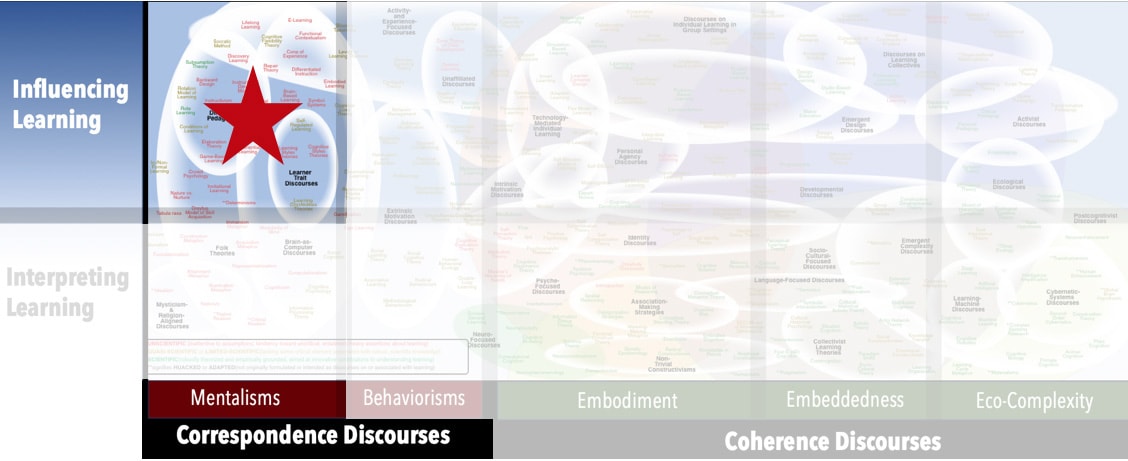Focus
Optimizing learning by matching learning outcomes to appropriate instructional strategyPrincipal Metaphors
- Knowledge is … objective facts
- Knowing is … mastery
- Learner is … a gatherer (individual)
- Learning is … acquisition, attainment
- Teaching is … transmission
Originated
1980sSynopsis
Component Display Theory asserts that teaching is most effective when instructional strategies and learning actions are properly aligned with the type of knowledge to be learned. The theory thus involves classifying and matching across several sets of distinctions: three learning actions (i.e., remembering, using, generalizing), four knowledge types (i.e., fact, concept, procedure, principle), four primary instructional strategies (e.g., exposition of general rules, exposition of specific examples, recall of generalizations, practice of specifics), and some secondary instructional strategies (e.g., prerequisites, helps, feedback, mnemonics). Component Display Theory advocates individualization of learning through significant levels of learner control of content and instructional strategy. Associated discourses include:- Constructivist Instructional Design (David Merrill, 1990s) – a compilation of recommendations for teachers. The advice is claimed to be anchored to Non-Trivial Constructivisms, but it is more reflective of Progressivism. Foci include seeking learner input, posing relevant problems, pursuing big ideas, challenging learner assumptions, and assessing learning while teaching. Specific design elements include strategies for organizing, integrating, and highlighting critical information.
- Instructional Transaction Theory (David Merrill, 1990s) – an attempt to integrate the aspects of instruction identified in Component Display Theory into each and every teacher–student interaction
- Merrill’s First Principles of Instruction (David Merrill, 1990s) – a extensive list of convictions about how to teach, including using real-world problems, activating prior learnings, anchoring to learner interest and experience, utilizing appropriate media, ensuring meaningful and focused practice, and providing opportunities for expression and application
Commentary
While masquerading as a diversified and comprehensive theory of learning and teaching, Component Display Theory is little more than an assemblage of prescriptions for teaching based on Folk Theories. Indeed, Component Display Theory might be described as a “meta-folk theory” as is combines typologies from a host of perspectives.Authors and/or Prominent Influences
David MerrillStatus as a Theory of Learning
Component Display Theory is not a theory of learning.Status as a Theory of Teaching
Component Display Theory is a prescriptive perspective on teaching.Status as a Scientific Theory
Evidence has been generated to support Component Display Theory – but that should not be surprising. Clearly, if the intention in a lesson is to have students memorize a set of facts, one would use strategies fitted to and supportive of memorization. Similarly, if the intention is to foster a conceptual understanding, one would employ different strategies. That’s common sense, and readily demonstrated. However, the failure to interrogate assumptions means that the theory cannot be classified as scientific.Subdiscourses:
- Constructivist Instructional Design
- Instructional Transaction Theory
- Merrill’s First Principles of Instruction
Map Location

Please cite this article as:
Davis, B., & Francis, K. (2022). “Component Display Theory” in Discourses on Learning in Education. https://learningdiscourses.com.
⇦ Back to Map
⇦ Back to List
